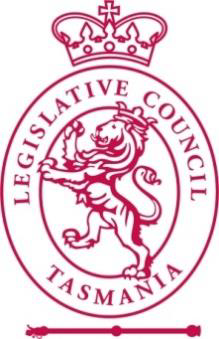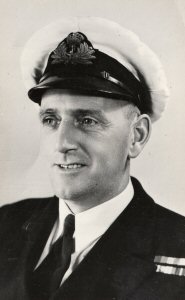Related Research Articles

The House of Assembly, or Lower House, is one of the two chambers of the Parliament of Tasmania in Australia. The other is the Legislative Council or Upper House. It sits in Parliament House in the state capital, Hobart.

The Tasmanian Legislative Council is the upper house of the Parliament of Tasmania in Australia. It is one of the two chambers of the Parliament, the other being the House of Assembly. Both houses sit in Parliament House in the state capital, Hobart. Members of the Legislative Council are often referred to as MLCs.

The Parliament of Tasmania is the bicameral legislature of the Australian state of Tasmania. It follows a Westminster-derived parliamentary system and consists of the governor of Tasmania, the Legislative Council, and the House of Assembly. Since 1841, the Legislative Council has met in Parliament House, Hobart, with the House of Assembly following suit from its establishment in 1856. The Parliament of Tasmania first met in 1856.

Norman Kirkwood Ewing was an Australian lawyer, politician and judge. He was born in New South Wales and moved to Western Australia in the 1890s. He served in the Western Australian Legislative Assembly from 1897 to 1901 and was elected to the Senate at the inaugural federal election in 1901. He resigned from the Senate in 1903 and moved to Tasmania in 1905, serving in the Tasmanian House of Assembly from 1909 to 1915. His last public role was as a judge on the Supreme Court of Tasmania from 1915 until his death in 1928.

The 1909 Tasmanian state election was held on Friday, 30 April 1909 in the Australian state of Tasmania to elect 30 members of the Tasmanian House of Assembly. This was the first general election in the British Empire to elect all members through a form of proportional representation, the single transferable vote.

The 1912 Tasmanian state election was held on Tuesday, 30 April 1912 in the Australian state of Tasmania to elect 30 members of the Tasmanian House of Assembly. The election used the Hare-Clark proportional representation system — six members were elected from each of five electorates.

The 1916 Tasmanian state election was held on Saturday, 25 March 1916 in the Australian state of Tasmania to elect 30 members of the Tasmanian House of Assembly. The election used the Hare-Clark proportional representation system — six members were elected from each of five electorates.

The 1928 Tasmanian state election was held on Wednesday, 30 May 1928 in the Australian state of Tasmania to elect 30 members of the Tasmanian House of Assembly. The election used the Hare-Clark proportional representation system — six members were elected from each of five electorates.

The 1931 Tasmanian state election was held on 9 May 1931 in the Australian state of Tasmania to elect 30 members of the Tasmanian House of Assembly. The election used the Hare-Clark proportional representation system — six members were elected from each of five electorates. For the first time, voting was compulsory, resulting in a high voter turnout.

The 1950 Tasmanian state election was held on 6 May 1950 in the Australian state of Tasmania to elect 30 members of the Tasmanian House of Assembly. The election used the Hare-Clark proportional representation system — six members were elected from each of five electorates.

The 1955 Tasmanian state election was held on 19 February 1955 in the Australian state of Tasmania to elect 30 members of the Tasmanian House of Assembly. The election used the Hare-Clark proportional representation system — six members were elected from each of five electorates.

The 1956 Tasmanian state election was held on 13 October 1956 in the Australian state of Tasmania to elect 30 members of the Tasmanian House of Assembly. The election used the Hare-Clark proportional representation system — six members were elected from each of five electorates.
This is a list of members of the Tasmanian House of Assembly between the 1897 election and the 1900 election.
The electoral district of Launceston was a multi-member electoral district of the Tasmanian House of Assembly. It was based in Tasmania's second city, Launceston, and the surrounding rural area.
The electoral district of Queensborough was an electoral district of the Tasmanian House of Assembly. It was based in the southern suburbs of Tasmania's capital city, Hobart, in particular Sandy Bay, and surrounding districts such as Cascades, Taroona and Kingston.
This is a list of members of the Tasmanian House of Assembly between the 1900 election and the 1903 election.
This is a list of members of the Tasmanian House of Assembly between the 30 April 1909 election and the 30 April 1912 election.
William George Wedd was an Australian politician and member of the Tasmanian House of Assembly and Tasmanian Legislative Council. He was Speaker of the Tasmanian House of Assembly from 13 September 1949 to 6 June 1950.
The 1948 Tasmanian state election was held on 21 August 1948.
The 1912 Tasmanian state election was held on 30 April 1912